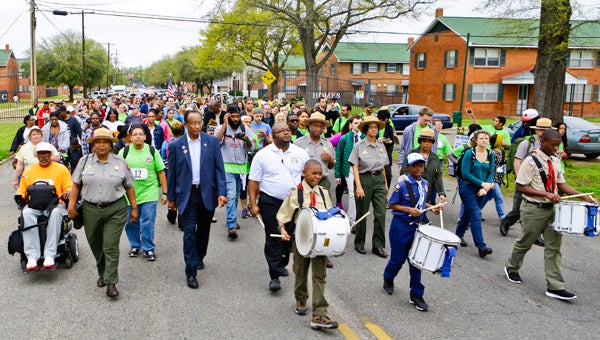Young marchers retrace past steps
Published 7:48 pm Saturday, March 21, 2015
The first steps of the National Park Service’s Walking Classroom were officially taken Saturday as more than 200 people marched from Brown Chapel AME Church, over the Edmund Pettus Bridge and on toward Montgomery.
The day began with a mass meeting at Brown Chapel, where the marchers heard from the Rev. Leodis Strong, Selma Mayor George Evans and foot soldiers Frederick D. Reese and JoAnn Bland.
After the meeting, the group gathered outside to line up and begin their march.
One marcher, Lillian White from South Carolina, said she was excited and looking forward to crossing over the Edmund Pettus Bridge and taking in the history beneath her feet.
“I’m most looking forward to crossing the Edmund Pettus Bridge and honoring the people who were before me,” White said. “I wanted to come to this to learn history, to know what happened and to understand as fully as possible both the achievements and the costs of getting the right to vote, and how painful, dangerous and risky it was for a lot of people.”
White, like many of the marchers, knows about the original march from Selma to Montgomery, but she said this experience is about retracing history and taking in more than a book offers.
“I’m just trying to open myself as fully as possible to all of the people who are here, to the place that we’re at, and I hope that I’m available to it all,” White said. “I’m really excited to use it as kind of a lens for what’s going on today, because there’s definitely a lot of work to be done.”
Another marcher, Sharada Jambulapati from Montgomery, said she works at the Southern Poverty Law Center so she deals with the same type of issues that occurred 50 years ago.
“The work that we do continues. Although we had the march 50 years ago, some of the same issues that we have seen in the past are very much relevant today,” Jambulapati said. “I’m just really excited to be with a bunch of young people and hearing and learning about the struggles that happened in that past and learning from the lessons, but also how can we apply it today?”




